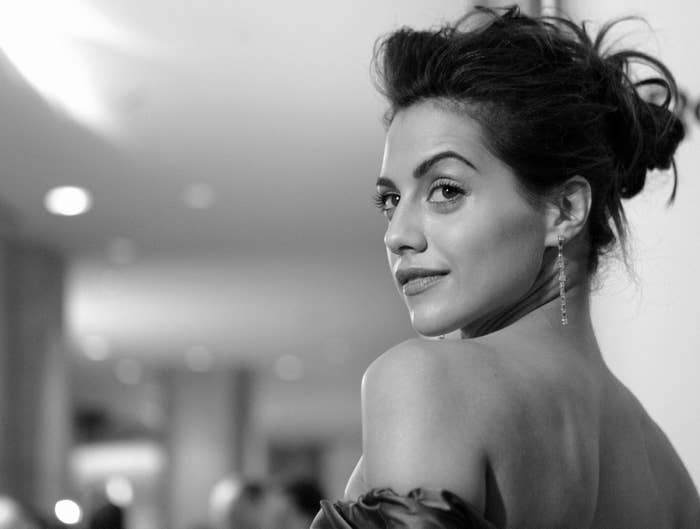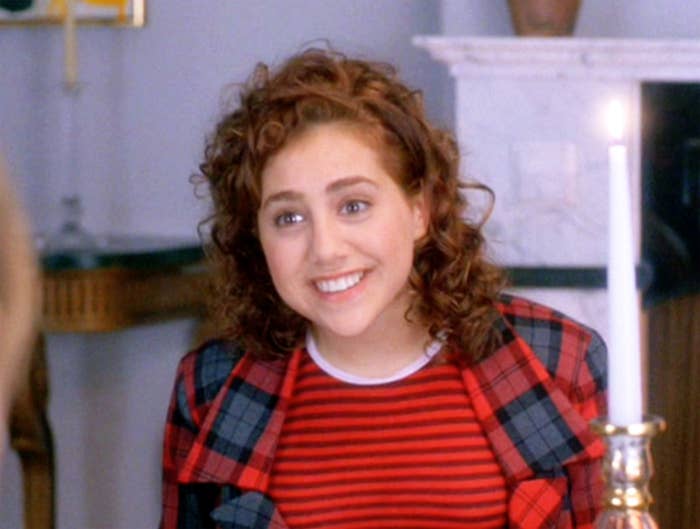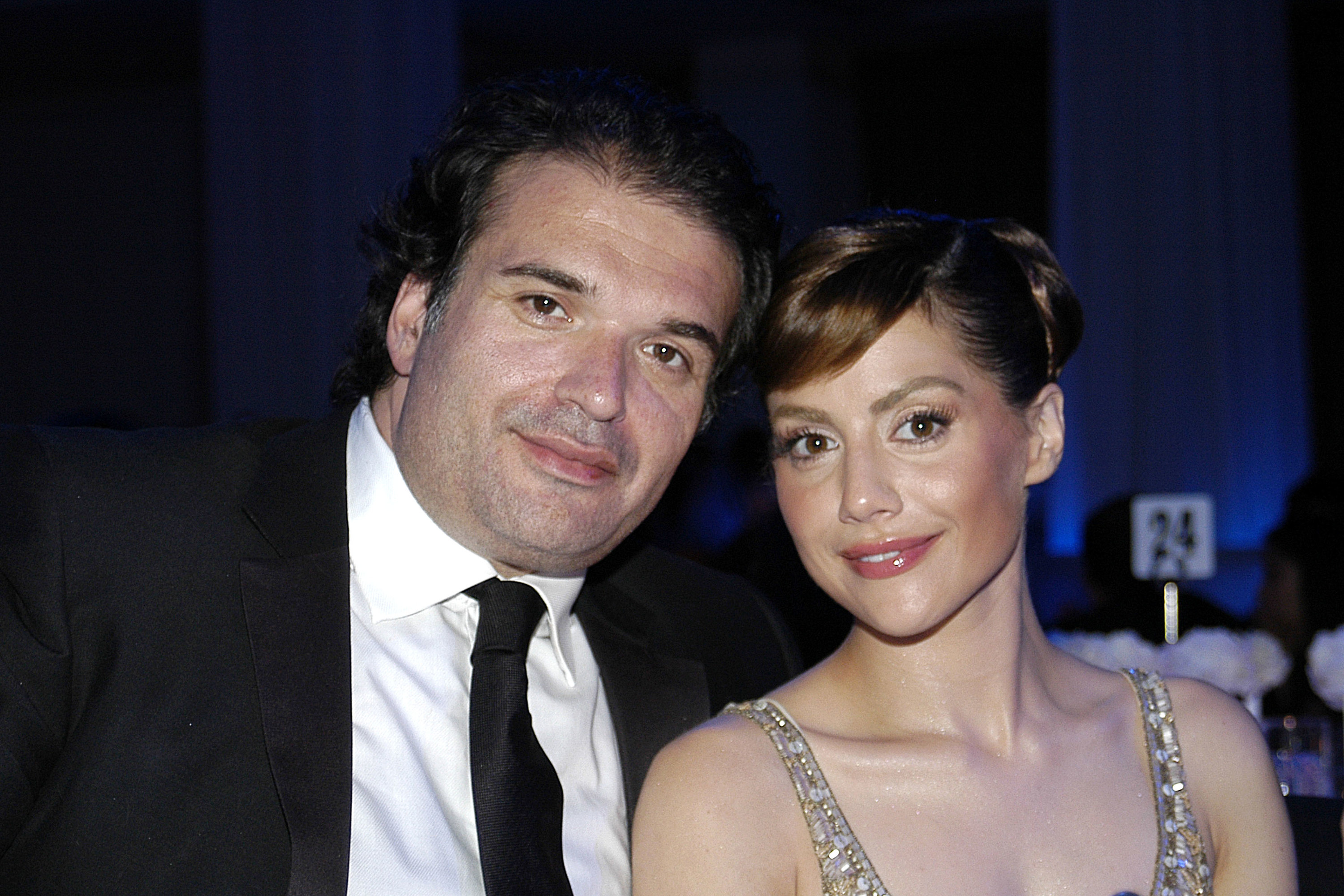
For anyone who followed her career, the news of Brittany Murphy’s 2009 death came as something of a shock. It wasn’t just that the causes of death, pneumonia and anemia, combined in what seemed like an incongruous demise for a 32-year-old. There was also an element of “what ever happened” to her, to the performer of incandescently goofy allure in films like Clueless and dramatic intensity in Girl, Interrupted.
There had been rumors about supposed drug use, health issues, and a troubled behind-the-scenes life with her husband, Simon Monjack, as her work shifted from A-list roles to direct-to-video films. Her death — and then, on top of it, the husband’s death five months later — became a tabloid mystery, stoked by Lifetime movies and Investigation Discovery specials.
As with Britney Spears, another young woman star whose complicated aughts offscreen life also led to Lifetime movies and tabloid specials, the story has now found a supposedly respectable streaming-era outlet: a meta-tabloid documentary about her personal life. HBO Max’s What Happened, Brittany Murphy? is filmmaker Cynthia Hill’s attempt to cover the messy story. An inquiry into her downfall, it platforms fan theories and tabloid speculation even as it claims to be commenting on their sensationalism. It’s often tasteless, but also, paradoxically, an insightful look at the star’s image and career.

What Happened is technically structured as a kind of forensic investigation of Murphy’s demise. Toward the beginning, there is footage and audio from the night of her death, as well as input from random YouTubers raising questions about her seeming downward spiral, a new feature of streaming documentaries specializing in the mysterious deaths of young women.
It moves back and forth in time between those scenes and interviews that grapple with Murphy’s rise as a performer and celebrity, and they are surprisingly insightful. Friends and acquaintances recall that her mother, who raised her as a single parent, followed Murphy’s dreams from New Jersey to Hollywood.
Yet even in her lifetime, it’s not as if she were the kind of star who turned her life into fodder for the tabloids or gave endless interviews. And the film suffers from not having more of her perspective in it.
Murphy was performing from childhood, and the amateur footage of her acting as a tween shows her ability to naturally exist in front of a camera. She quickly moved from television pilots to television shows like Sister Sister, to her star-making role in 1995’s Clueless. That movie’s director Amy Heckerling, one of the many prominent Hollywood people whose presence gives the film gravitas, remembers that Murphy seemed to actually embody the sincere awkwardness of Tai, the outsider of Clueless, while other aspirants seemed to be trying too hard.
We hear about Murphy’s dedication to her craft, and how she delivered the iconic line “You’re a virgin who can’t drive” with a memorable attitude. Her acting opposite Angelina Jolie in 1999’s Girl, Interrupted made many take notice of her.
One of the major points that emerges is that, as Murphy came up in the industry, the limited beauty standards of aughts Hollywood made it difficult for her to find a lane. Her talent wasn’t in question, and the film highlights it. The director of 2001’s Don’t Say a Word recalls how Murphy effortlessly segued from her screen test to an actual scene with Michael Douglas, seamlessly recalibrating her performance from less dramatic to more intense to fit in with the film’s rhythms.
But she was told by an agent that she was “huggable but not fuckable” and was deeply affected by these kinds of comments. Costar Kathy Najimy recalls how she remade herself, losing weight and dyeing her hair blonde. Her management was trying to slot her as a leading lady, and she played opposite Eminem in 2002’s 8 Mile before vying for rom-com relatability with Ashton Kutcher in 2003’s Just Married.
Part of what’s uncomfortable about watching this film is that Murphy seemed to be a private person. While she dated both Eminem and Kutcher, there’s an unwillingness to play the celebrity game that comes off even in the very brief snippets we get of her. The Maxim covers and quotes from her interviews, where she replies to rumors of eating disorders, paint a startling portrait of vulnerability.
Yet even in her lifetime, it’s not as if she were the kind of star who turned her life into fodder for the tabloids or gave endless interviews. And the film suffers from not having more of her perspective in it.
Instead, in indulging the public’s desire to know, the film tramples over her to focus on the husband who has been pointed to as the Svengali behind her demise: a shady, unemployed British screenwriter named Simon Monjack.
Their 2007 marriage is, per the film, the start of her downfall. The film highlights theories from People magazine, and reporters from Radar Online are trotted out to speculate about Murphy and Monjack’s relationship with “it was widely believed,” “we all thought,” etc. In this way, the film is able to have its cake and eat it too: both speculating about uncomfortable things while avoiding getting its hands too dirty.
The documentary convincingly paints Monjack as a predator and con artist with a history of fabulism, unpaid debts, and a tendency to attach himself to women. There is evidence that he encouraged her to lose weight and to get plastic surgery. Some images he took of her at night, one of them featuring her in a muzzle, are eerie and haunting. The director of one of her last films recalls how she seemed worse, and less professional, when he was around.

There is new reporting about the husband’s backstory, including interviews with his mother, brother, and even a former fiancé who creepily recounts getting sick and how Monjack refused to call a hospital.
The testimonies paint Murphy’s death, from pneumonia with anemia as a secondary factor, as completely preventable if she had been taken to a hospital earlier. Her mother, Sharon, who called 911 and became another object of speculation after Murphy’s death, didn’t cooperate with the filmmakers.
This documentary is a reminder that even, perhaps especially, in death, celebrity women’s bodies are made to speak for them.
Ultimately, the film frames Murphy’s demise, and then Monjack’s subsequent similar death, almost as if there was an element of a slow murder-suicide, with Monjack in the role of a family annihilator but without the sudden violence as they both wasted away.
Toward the end of the series, disgraced gossip blogger Perez Hilton looks back at the way he covered Murphy in her final year, when he speculated in an interview that she would soon be dead. It was gross, he admits with supposed contriteness, adding, “2009 in many ways was a very gross time.” It’s clear that director Cynthia Hill is hoping that her film isn’t just tabloid speculation but a commentary on aughts tabloid culture. And there is a way in which the film’s tonal unevenness, ranging from commentators enthusing about the “iconic” nature of Clueless to faux-sober reporting about Monjack, matches the weirdness surrounding Murphy’s life and mysterious death.
Still, as the docuseries shifts from the analysis of Murphy to the forensics of her body — even the weight of her organs — there’s a queasy question of whether it’s really necessary to go there. This documentary is a reminder that even, perhaps especially, in death, celebrity women’s bodies are made to speak for them. But that probably says much more about our culture than about this film. ●
